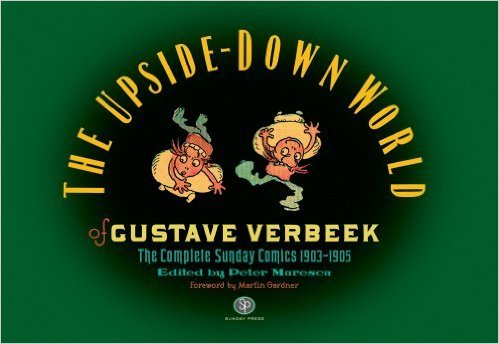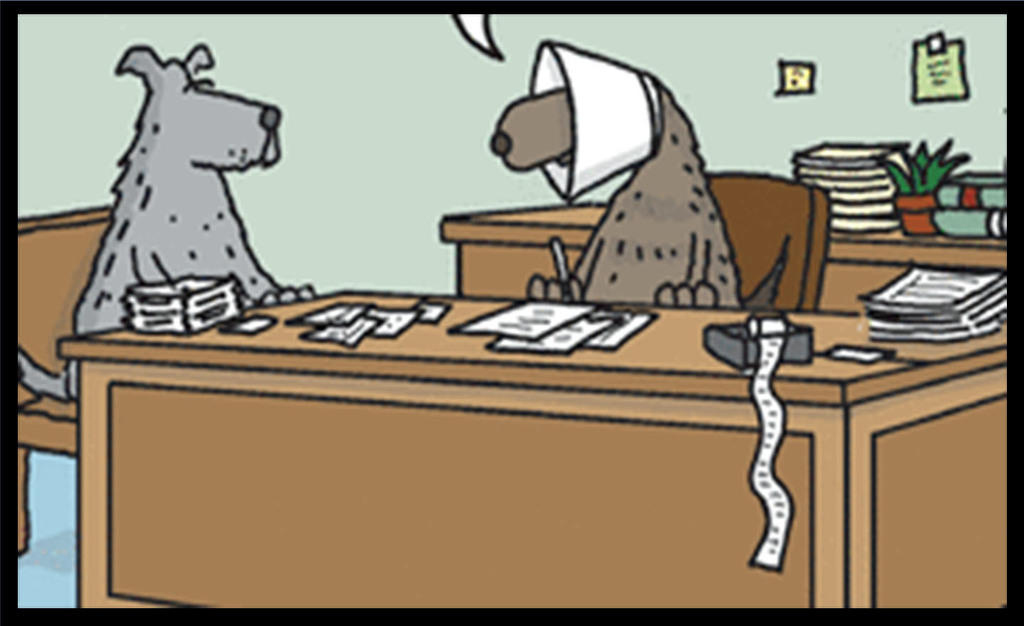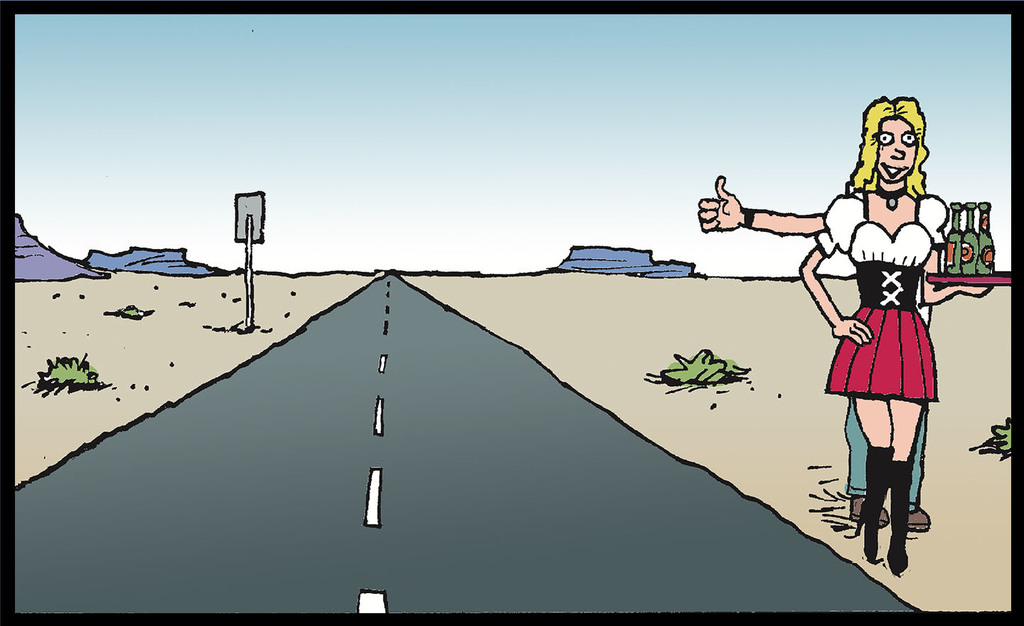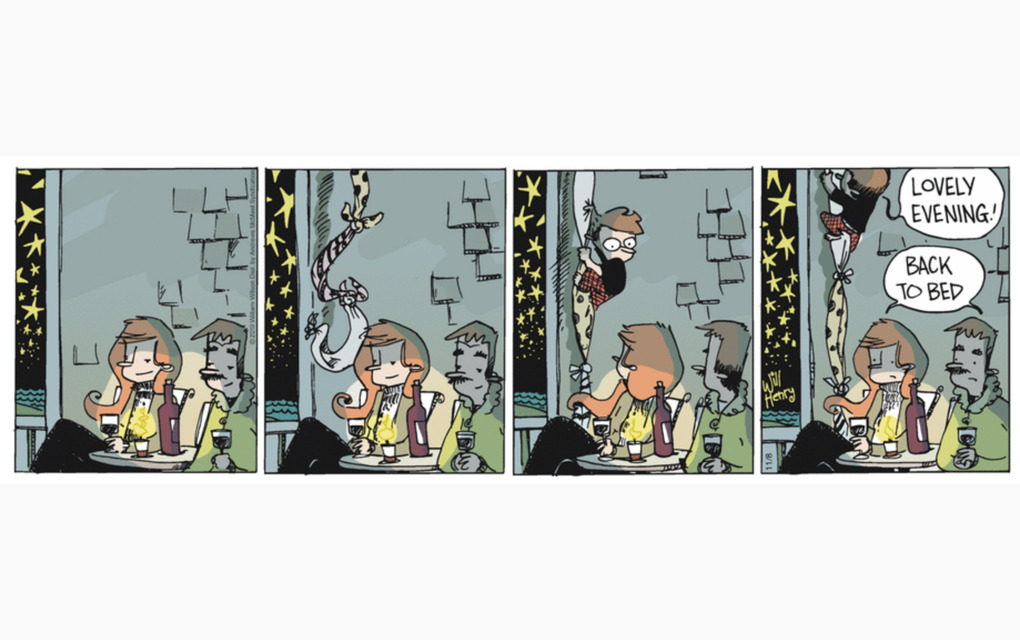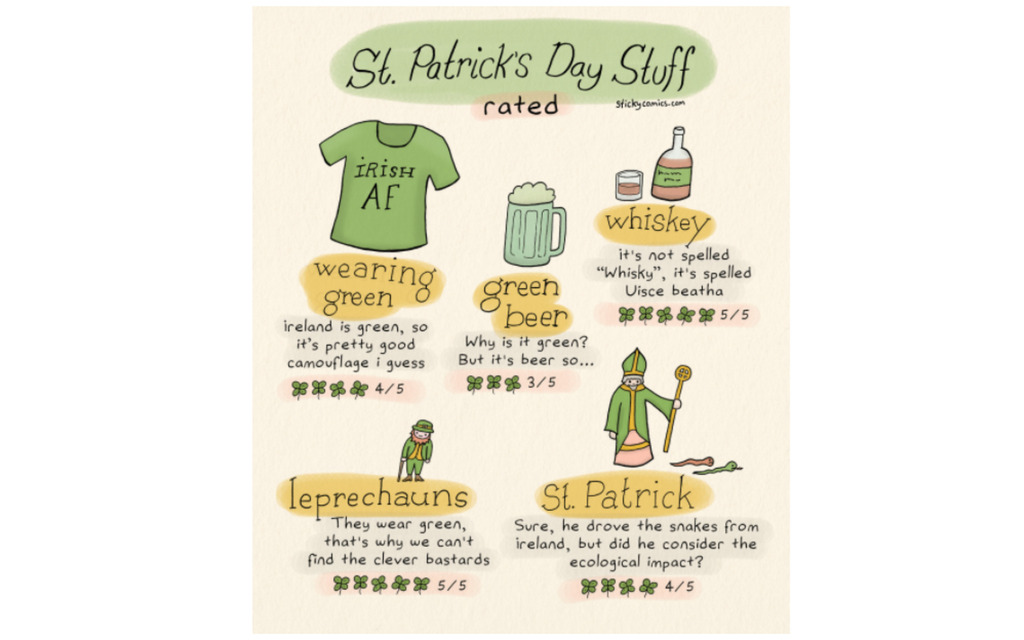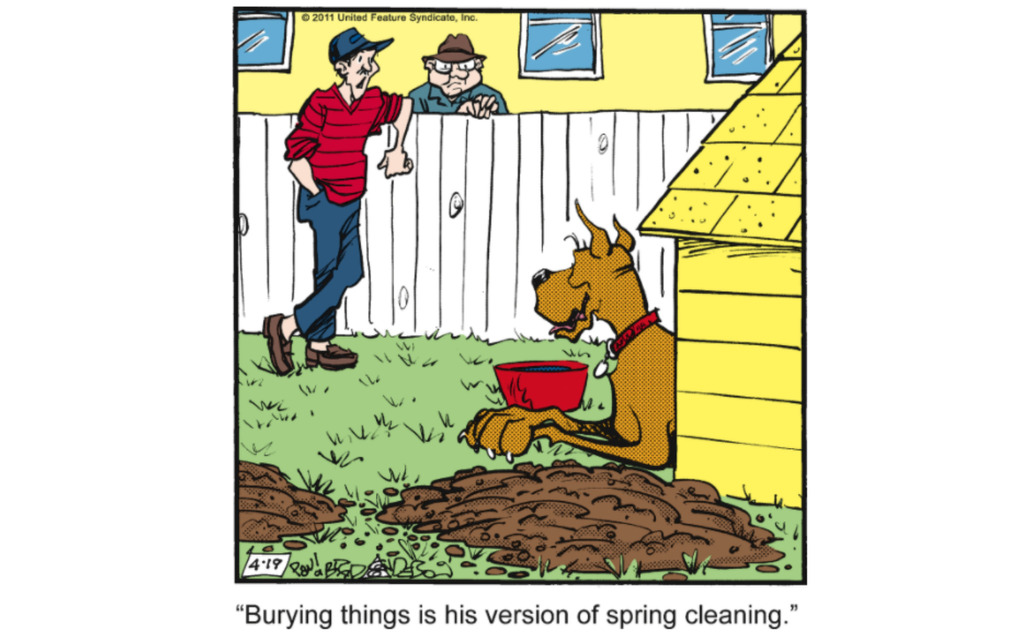Inside 'The Upside Down World of Gustave Verbeek' With Peter Maresca
by Caleb GoellnerThanks to this week's launch of The Upside Down World of Gustave Verbeek, I've found myself thinking in a full 360 degrees. I'm rotating my work notes, tilting my head as pigeons fly by, and occasionally searching for hidden messages as I flip my calendar. So far I've decoded nothing of use, but it's only a testament to creator Gustave Verbeek's expert design skills on his flippable comic strip series, The Upside-Downs of Little Lady Lovekins and Old Man Muffaroo, among other works restored and collected by Sunday Press Books. For more insight into Verbeek's pioneering works from the early 1900s, we reached out to Sunday Press Publisher Peter Maresca, who had a wealth of knowledge to share about the history behind the comics, the society that shaped its reception by the masses, and why we still flip over Verbeek's work more than a hundred years later.
Read on for our full interview with Maresca on The Upside Down World of Gustave Verbeek.
GoComics: Gustave Verbeek was an interesting, globe-trotting guy. How do you think his exposure to multiple art traditions in Japan, France and the US helped inform his penchant for visual and narrative portmanteau?
Peter Maresca: It does seem unusual that these varied styles and artistic attitudes would come from the son of Christian missionary in Japan. When coming of age in Asia Gustave Verbeek developed a unique perspective on art; for things non western in general, and specifically the "upside-down" concepts displayed in the Joge-E drawings popular in 19th Century Japan. As his interest in art matured, Verbeek traveled to Paris to learn classical technique. With his involvement with the Chat Noir theatre and its satirical magazine, he developed his sense of humor and the absurd, which enhance his cartooning. Once in the US, he had greater freedom and a larger audience — in magazines, illustrated books and, of course, newspaper comics — to expand his artistic output in different directions.
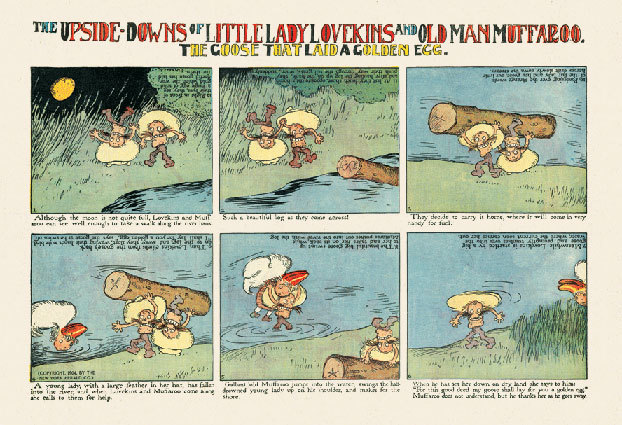
GC: The Upside Down World of Gustave Verbeek print collection focuses on The Upside Downs of Little Lady Lovekins and Old Man Muffaroo, with several of the creator's other comic strips included. What about his comics makes them readily presentable in this kind of collection, in your view?
PM: My purpose for entering the publishing world (I had no print experience before the Sunday Press Little Nemo) was to give comic lovers the chance to experience early comics in their original broadsheet size and colors. In the handful of earlier, smaller reprints of Verbeek's comics it was difficult to appreciate the artwork and hard to read the small text. Most of today's comics fans don't remember that the size of comics was determined by folding and cutting pages form the Sunday Comics presses to give you a page that was one-quarter the size of a newspaper comics page that it might neatly sell from a magazine rack. And with current Sunday comics, the newspaper page itself has shrunk by about 25 percent and it is rare to find a comic strip that takes up half that page. Most are given 1/4 of a page or less.
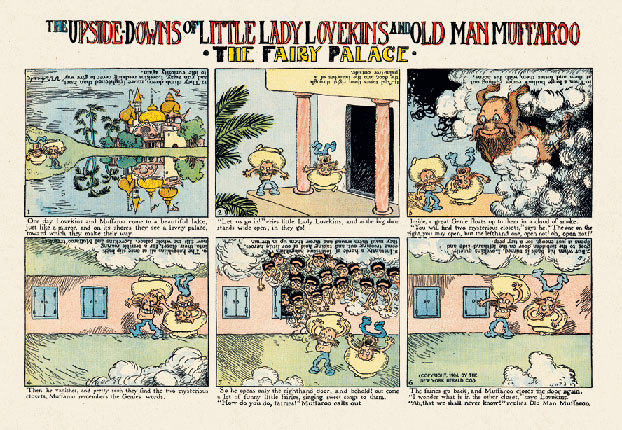
GC: Many in publishing are still averse to digital for a host of reasons. What's your approach to determining what is and isn't right for a particular format and why have you landed on digital syndication for so many of your publishing projects?
PM: As a publisher, the digital medium represents an expanded audience and expanded real estate for the practicability of presenting more of the work to more viewers. The improved zoom feature in GoComics (which was developed to properly view the Little Nemo series) enables viewers to get a panel-by-panel view of the artwork, making it a more immersive experience. And by displaying the Lovekins and Muffaroo adventures in both the normal and "upside-down" views you won't have to turn flip computer screen to read the whole story. Still, I'm a traditionalist, and feel that the best way to view any work like this is on paper, but again, screens offer a chance to expose more viewers to material they otherwise might not see, and many may wish to go back to print to get the true sense of the work.
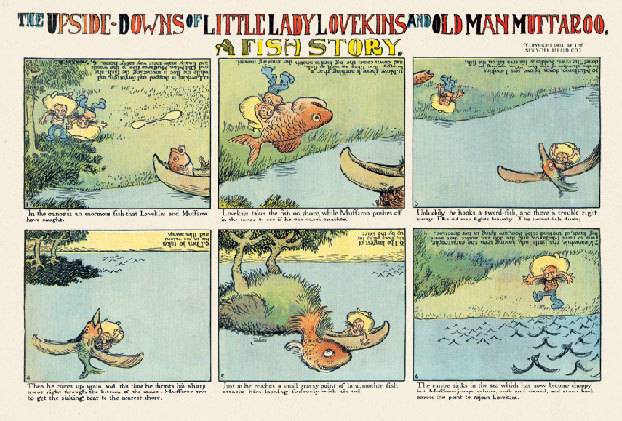
GC: Verbeek worked on a number of series concurrently, which is rare today outside of studio systems. Do you think working this way had any effect on his material?
PM: In the early days of comics this was not uncommon. Outcault, Swinnerton, McCay, McManus and others produced more than one comic strip at a time, often while pursuing other artistic endeavors outside of comics. This did not seem to have much effect on the quality, other than perhaps the few odd "dull" years of Little Nemo as McCay seemed to be doing six things at once. The amount of work these artists put into their newspaper comics would totally overwhelm most comic strip artists of today.
GC: One issue with any material old enough to be considered historic is whether or not it is relevant to current readers as entertainment - particularly when its sensibilities reflect a much different time. What do you feel makes Gustave Verbeek's work relevant to modern readers?
PM: When reading 20th century comic strips, often it is that sense of another time that creates the appeal. It's something beyond a history lesson -- a time machine offering, in a way that only cartooning can do, a view of day-to-day life in another era. But for the most part, Verbeek's comics transcend that sense of past, taking place in a fantasy environment where, particularly in hisTerrors of the Tiny Tads, the humor, personalities, and silly sense of adventure are timeless.
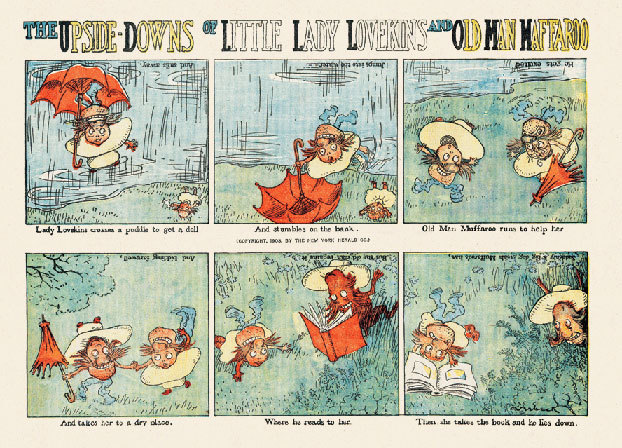
GC: Are there any clear lines of inspiration that you think flow from Verbeek's comics into the present day?
PM: When you look at the early drawings of Maurice Sendak there is a striking resemblance to Verbeek's Tiny Tads. Sendak was a lover and collector of Little Nemo since the 1960s, and the fact that Tiny Tads appeared on the back of Nemo in the papers makes me think the similarity is not a coincidence. Other comics that present children or child-like characters relating without adults take perhaps a more indirect inspiration from the Tads, like Peanuts or the early comic book work of Walt Kelly.
GC: You're one of the most prominent collectors and publishers of material from the early 1900s. What about this era of comics draws you in?
PM: Other than Little Nemo, which early in the dawn of comics appreciation escaped the "comics ghetto," I was a bit late to the parade here. My interest in comic strips shifted from my love of Super Heroes of the 1960s and 70s to the adventure comic strips of the 1930s and 40s. Others like Rick Marschall, Bill Blackbeard and Alfredo Castelli were first in chronicling the earliest comics and my relationships with them lead me to the fascination with the cartoon creations at the birth of the medium.

GC: Are there any aesthetic, narrative or tonal conventions from Verbeek's work that you'd like to see make a comeback?
PM: Anarchy and experimentation were a driving force in many early comics, but it was in most cases with an understanding of the method and history of illustration art. Verbeek was one of many cartoonists who created "serious" art before, after, and during his comics. When comics come not from just other comics and the life experiences of the artist, but from an understanding of world history, fine art and literature, it leads to truly great work. Particularly when combined with a sense of the absurd.
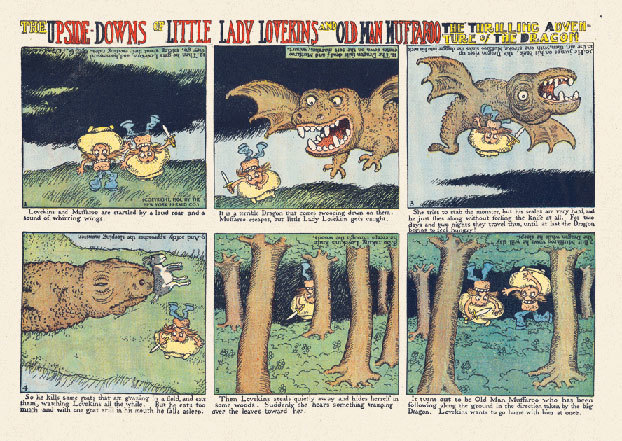
GC: What are some other comics you'd suggest for readers who enjoy The Upside Down World of Gustave Verbeek?
PM: There are too many to list! The first thing I would suggest would be to fully review Origins of the Sunday Comics feature on GoComics.com, where nearly every feature in the first two decades of comic strips is represented. Then (unabashed plug ahead) recreate the original experience with one of the full-size collections from Sunday Press.
Dive into the rich history of this medium we all enjoy, and there's as much to find or more than with the many great comics of today.
GC:Thank you very much for your time.
PM: As the young Verbeek might say, Het was mij een genoegen, or Il a été mon plaisir.
